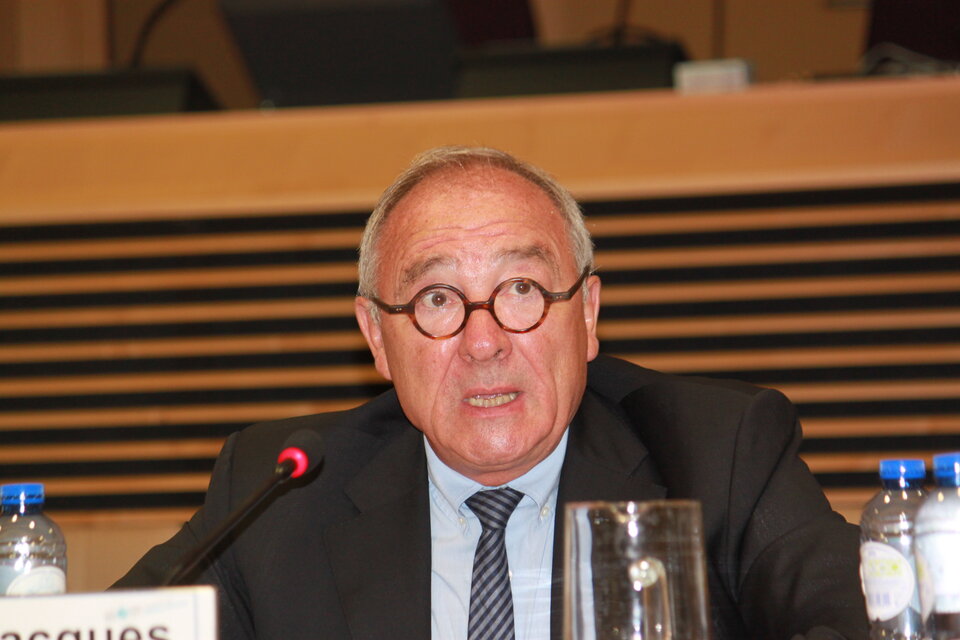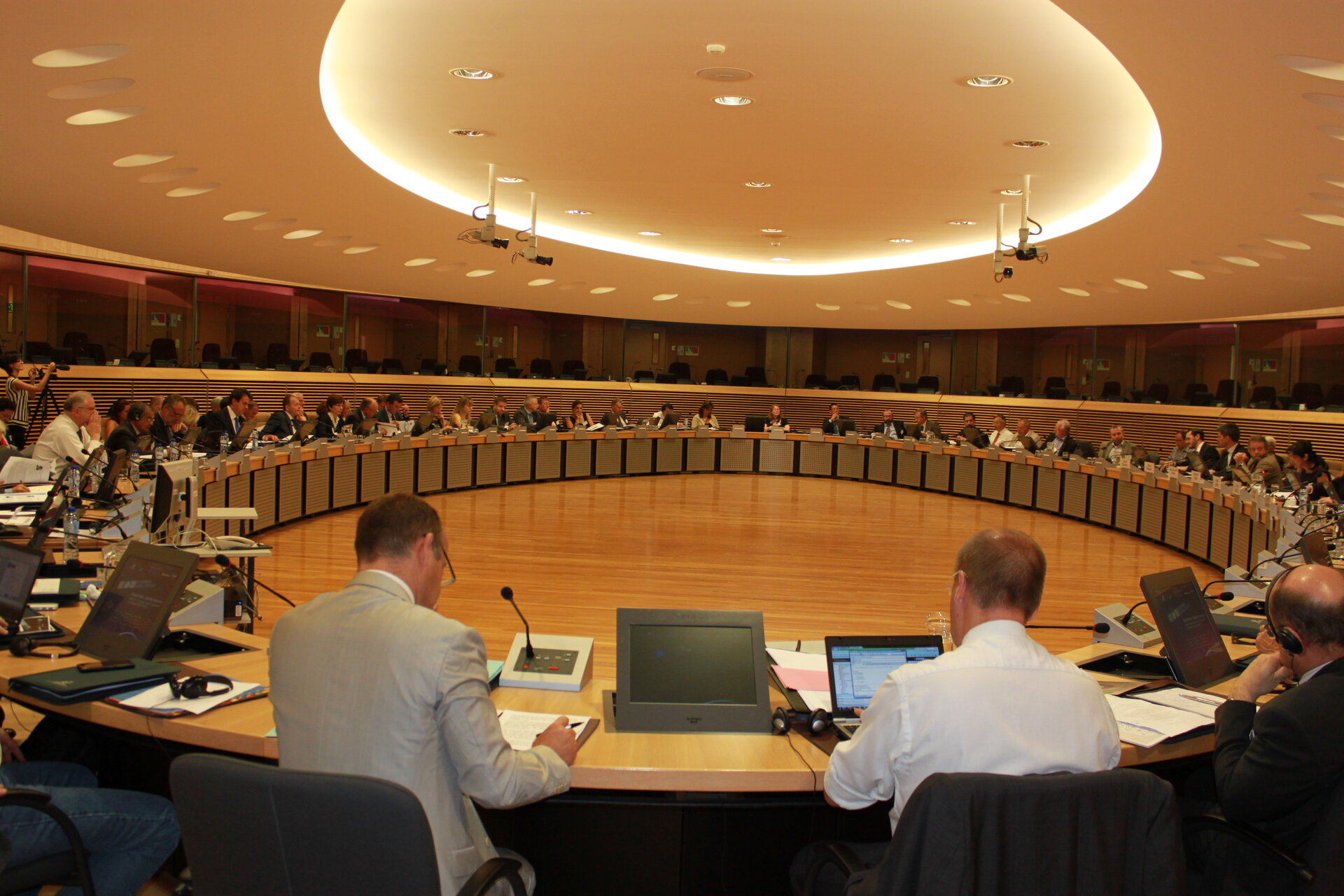Global risks- satellite answers
Hosted by ESOA (European Satellite Operators Association) and Eurospace, in cooperation with the World Economic Forum, the second European Satellite Day took place in Brussels on 5 September 2013. It focused on some of the risks identified by the Economic Forum Global Report for 2013 related to global stability in terms of likelihood and impact. The conference gave the floor to European and international experts who portrayed the role that satellite services play in response to identified risks and how they can be used to mitigate them.
Satellites are invisible, but satellites and their services are integral part of our daily lives. Those outside the space sector are often unfamiliar with the essential role satellites play, not only in allowing the proper functioning of our society but also in delivering answers to global challenges and risks. Planning ahead to help institutions ensure that space hardware and services are in place and ready to respond when needed is not an option.
ESA’s Director General Jean-Jacques Dordain delivered key messages at the conclusion of the event, together with Chris Forrester, Editorial Director of Inside Satellite TV. Here is a transcript of his address.

“It is a difficult task to conclude a Satellite Day you have not attended yourself – I am therefore fully relying upon Chris Forrester to make the summary and conclusions and I shall restrict myself to personal messages.
Global risks require global answers and satellites which provide global coverage of planet Earth, are certainly unique contributors to global answers. However, the contributions of satellites must take into account at least the following four messages for being valuable.
First, we need global answers while, in space, there is no global actor, with the noticeable exception of telecoms operators. Most of the actors in space are still national or regional. And at the same time, global risks have regional consequences, which requires regional actors. This is the very reason why global answers have to be built up within partnerships of different actors: space actors and risk relevant actors. And I repeat in each of my interventions, partnerships are not easy to develop, and in particular to develop quickly; it requires someone to start and it takes long, even if the case is clear.
For example, the Charter on Natural Disasters which is today global, was started by two actors: ESA and CNES, demonstrating that even at ESA someone has to start, and it was CNES.
The positive part of partnership is that, usually, they are solid and sustainable (my usual joke is that it is difficult to start a program at ESA, but even more difficult to stop a program). Look at the partnership between ESA and Eumetsat: not easy to start but now it marks a long history of 30 years of success which have placed the European meteorology at the forefront of world meteorology.
Speaking of Eumetsat, I pass to my second message: answers to global risks require continuity of services.
Everybody agrees on that, but it is not so easy, because such continuity requires not only continuity of exploitation of a current generation of satellites, but also the development of successive generations of satellites, each generation taking into account the lessons learned from the exploitation of the current generation. Because, unfortunately, the more answers you provide to questions concerning planet Earth and its environment, the more new questions you raise, requiring new generations of satellites. Speaking of meteorology, we are developing today the 3rd generation of meteo satellites in geostationary Earth orbit and the 2nd generation of meteo satellites in polar orbit, continuing to place European meteorology at the forefront of the world meteorology.
My third message: as I said above, partnerships among different actors include actors who have no clue about space technologies. It is not easy to make it so that space actors and risk relevant actors understand each other. The risk relevant actors do not understand what space-based data can bring to them and how these data can be integrated in an already operational chain of decisions. The space actors do not understand the problems that the risk relevant actors have to solve and have always the tendency to impose space solutions to problems they don’t quite understand.
I have been personally involved in the start of the Charter on Natural Disasters and I can report that, indeed, it was not easy for us space actors, to understand how space-based data could be integrated in a chain of decision by civil security. It took time, but now, all civil security services of the world use satellite based data in case of natural disasters and “unfortunately” we receive more and more letters of thanks from civil security from all over the world!
Beyond this necessary mutual understanding, what is important in the dialogue between the space actors and the users is for each side to agree on “what is possible”, meaning adjusting the demand and the answer to what knowledge and technology can currently do (technical feasibility) and to what the funding sources can concretely pay (financial feasibility). This is the role of the Concurrent Design Facility that we have developed at ESA’s Establishment ESTEC which puts together the actors of the demand and the actors of the answer to design together “what is possible”. I understand that Anne Glover wishes to extend the role of CDF beyond the technical and financial feasibility and I am prepared to find with her other frontiers of “what is possible”.
And I come to my last message. What is possible depends:
1. During the design and development phases, upon the level of knowledge and the level of technology.
2. During the exploitation phase, upon the imagination of billions of individuals using satellite data.
In order to improve the answer and to face an increasing demand, we have to continue and invest in science to improve knowledge and in technology to improve capacities. For example, in Earth Observation satellites, there is no borderline between science and services. Envisat was a scientific satellite which was used extensively to deliver operational services, in particular in cases of natural disasters. The sentinels satellites, dedicated to Copernicus, are directly derived from the technology developed for the Earth Explorers satellites which are science driven satellites.
For what concerns the utilisation of satellite data, I don’t know any satellite for which its utilisation has been strictly limited to the demand for which it was designed. The experience shows that the users have an imagination which ensures that its applications are going much beyond the original demand. The most striking example being the use of GPS data which, originally, was limited to the demand of the US Navy without any commercial perspective! The key condition for making such development possible is to give open access to data!
So these are my four messages. They certainly do not cover all the aspects of satellite contribution to the management of global risks, but they are based on my personal experience and I hope they could help design global answers to global risks”.


